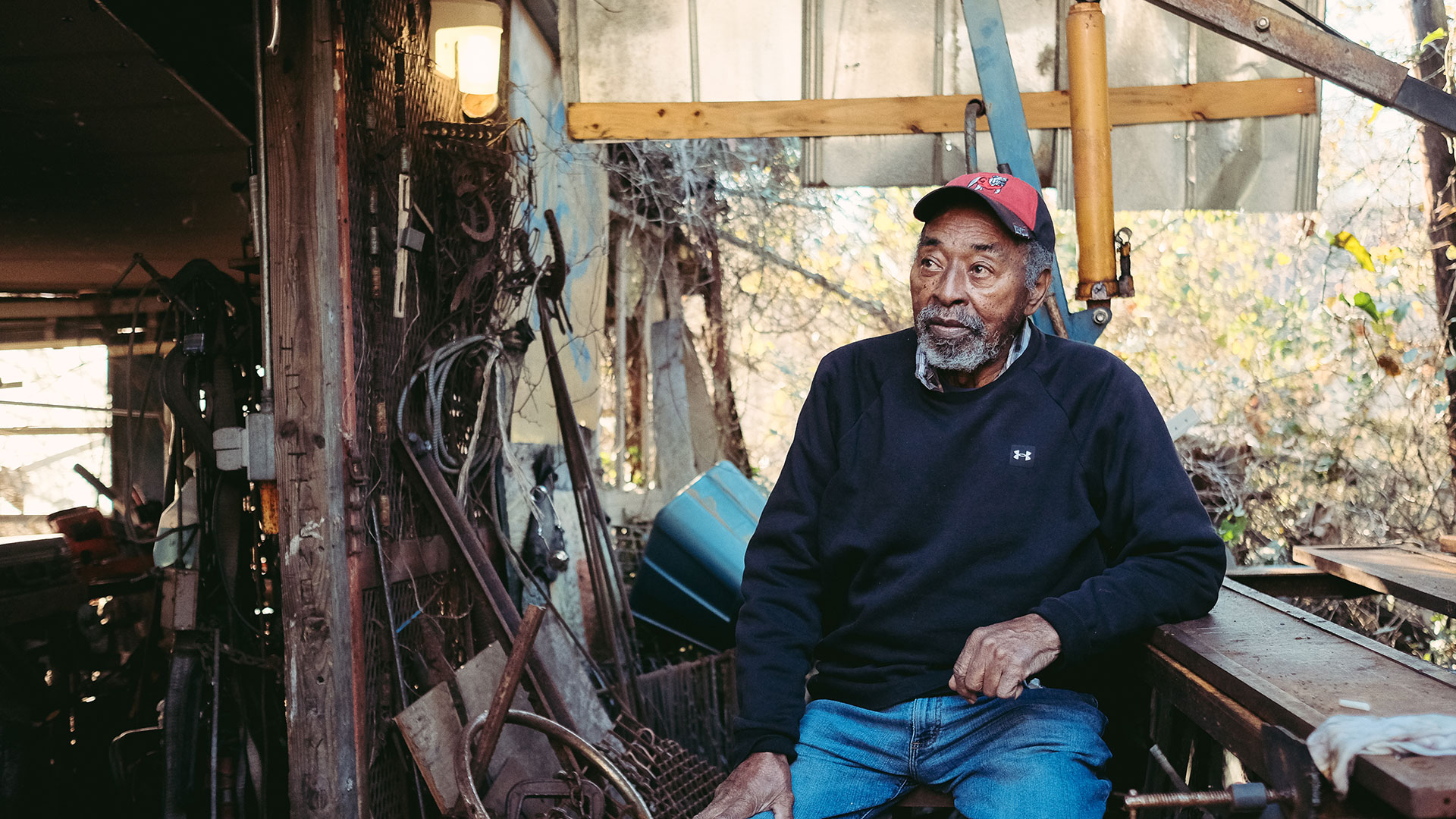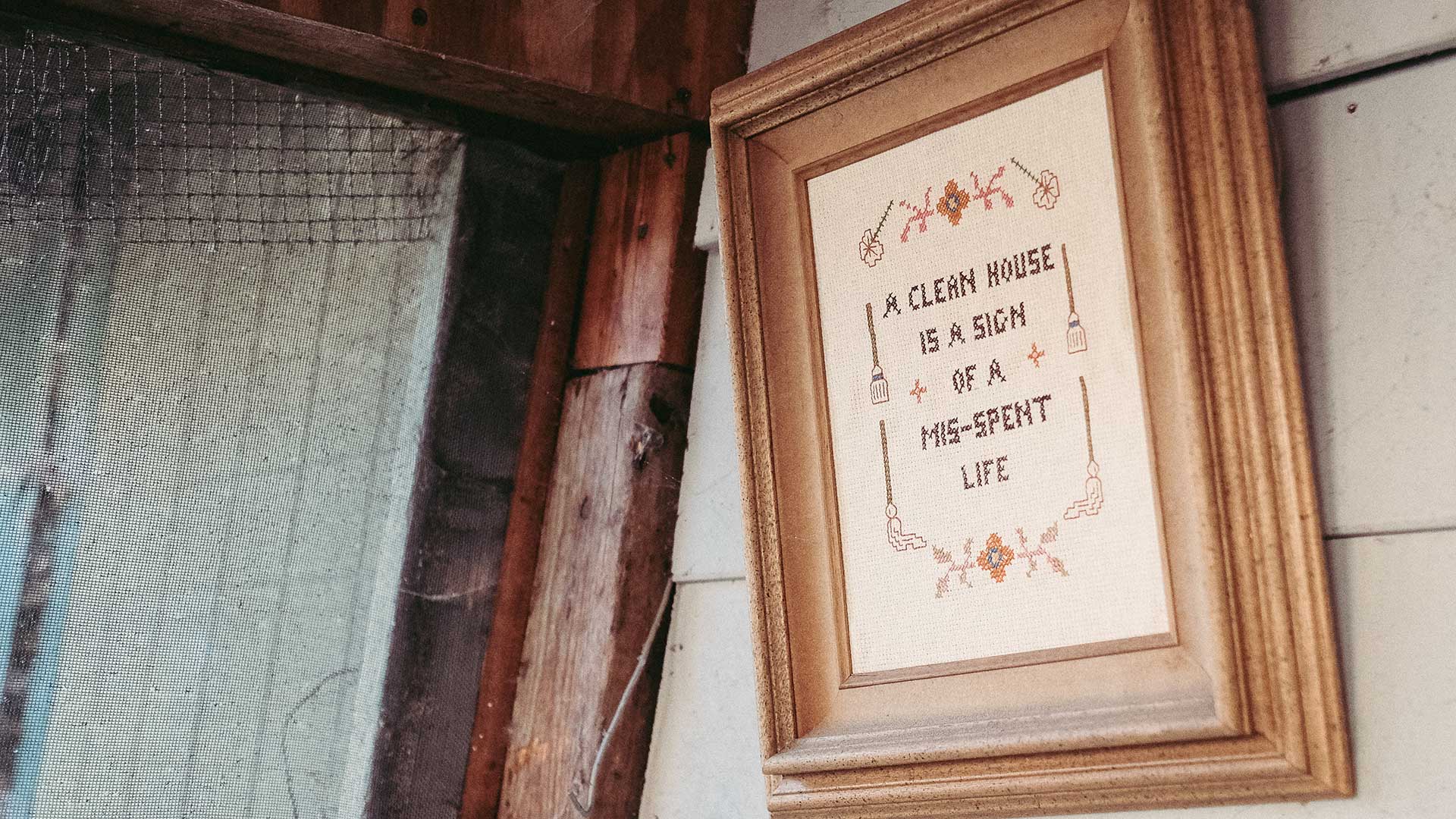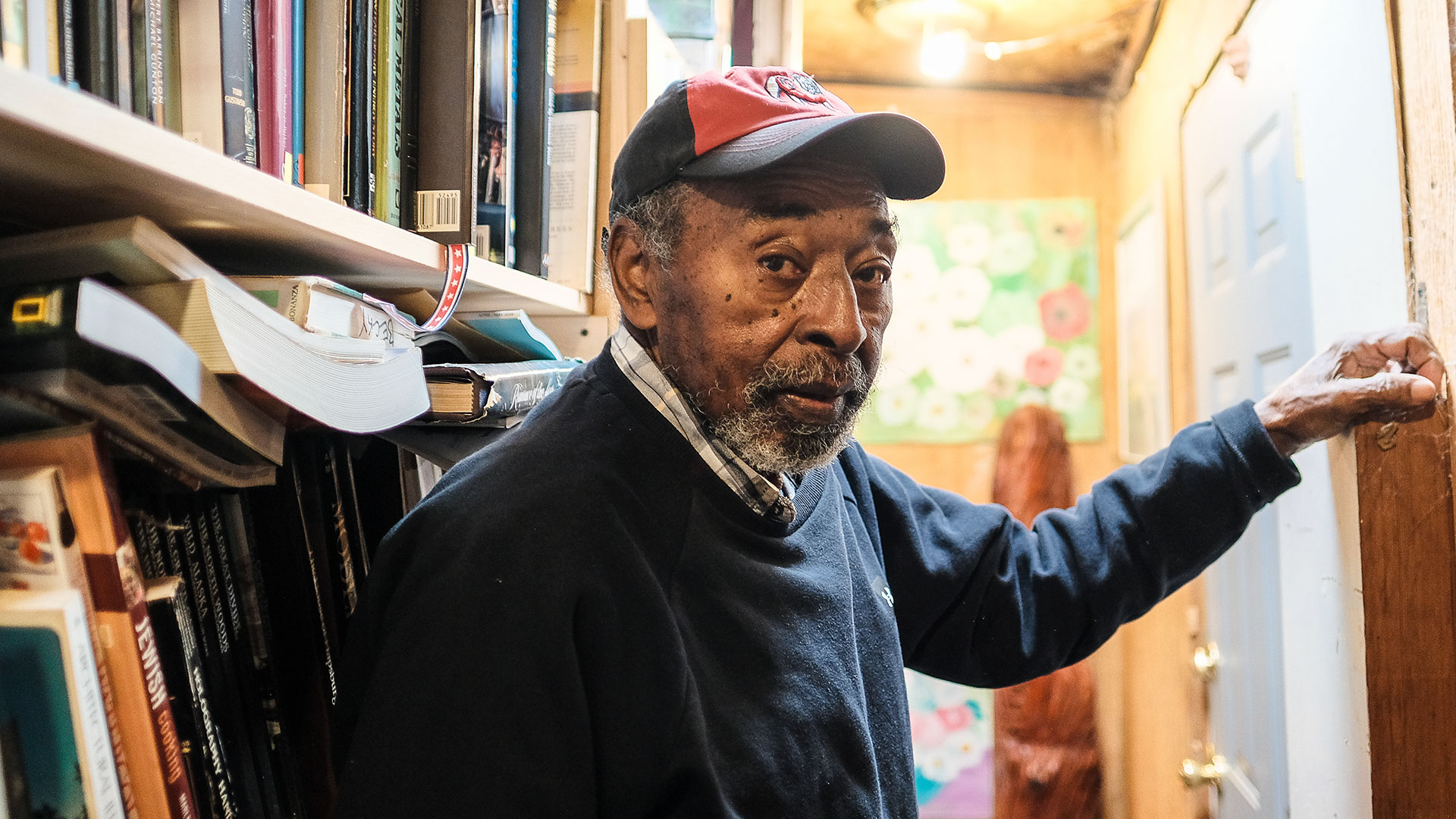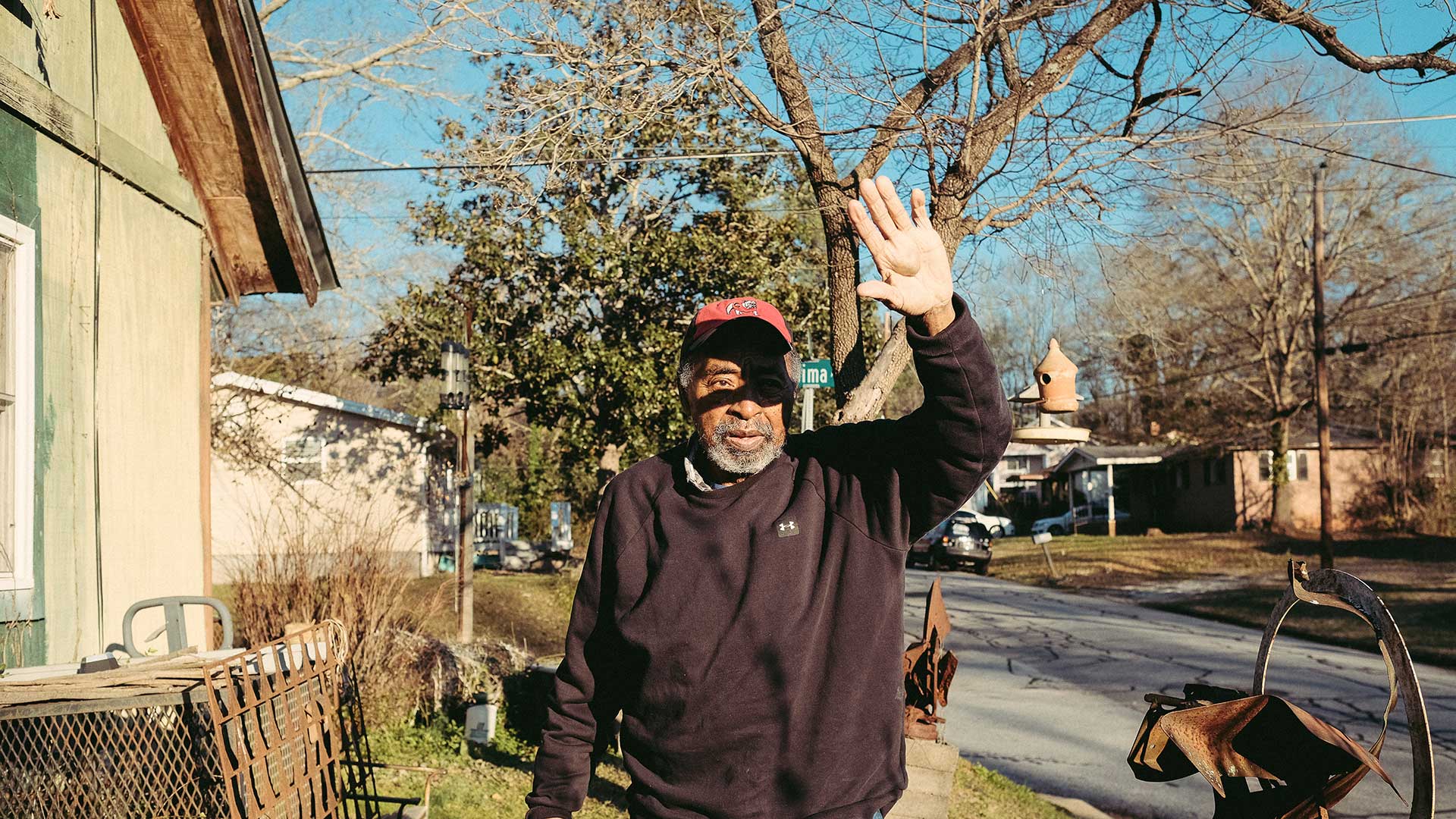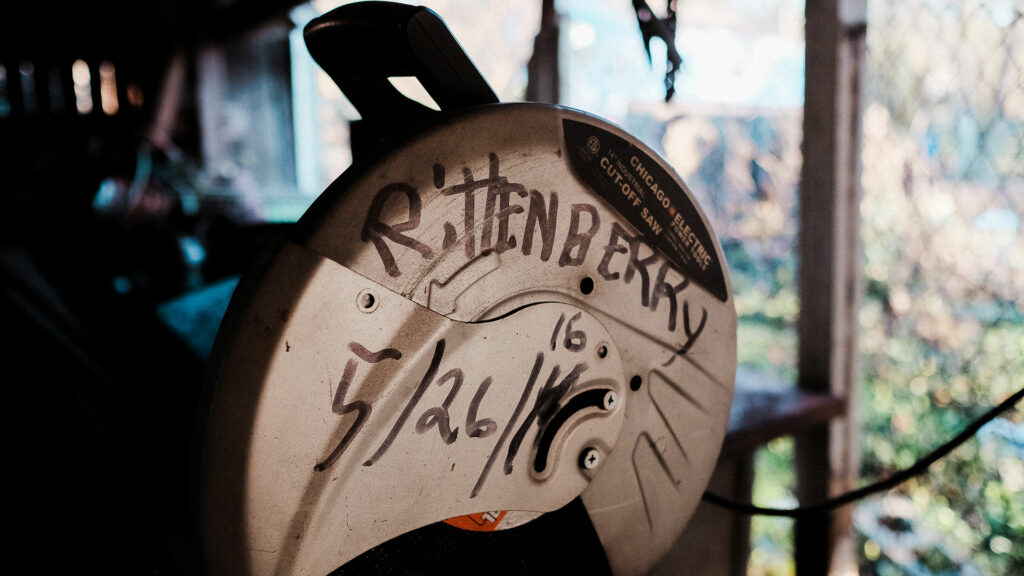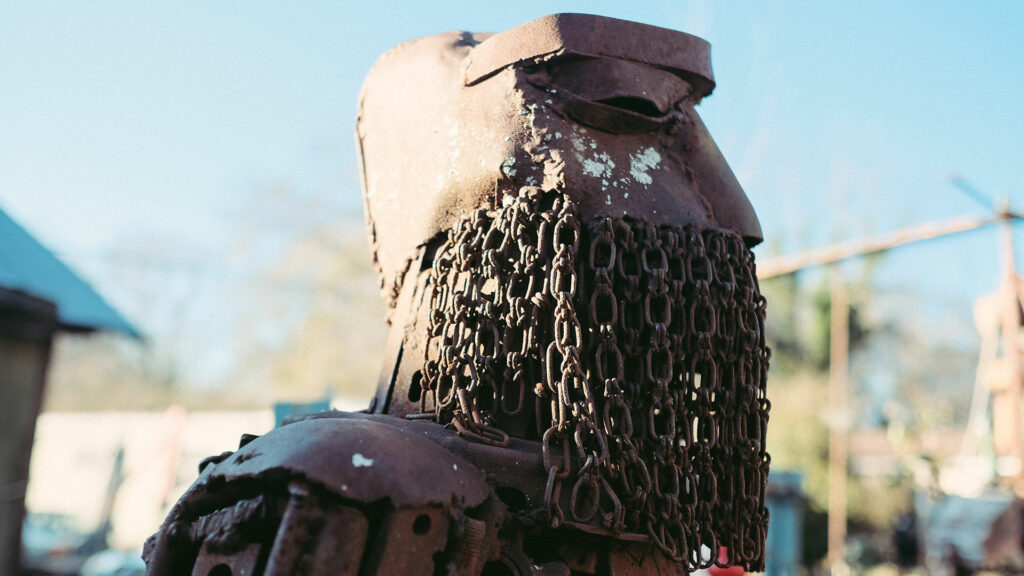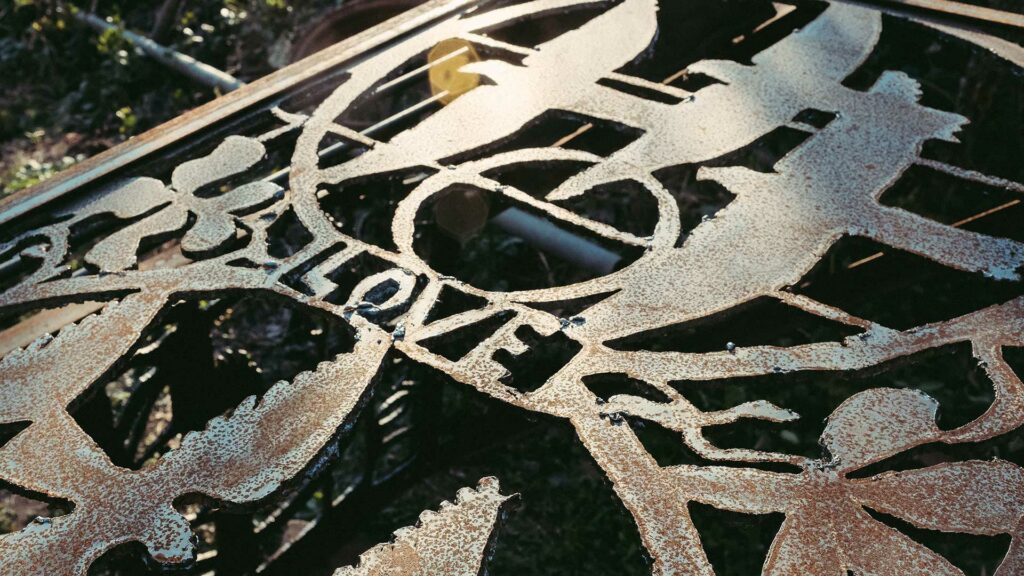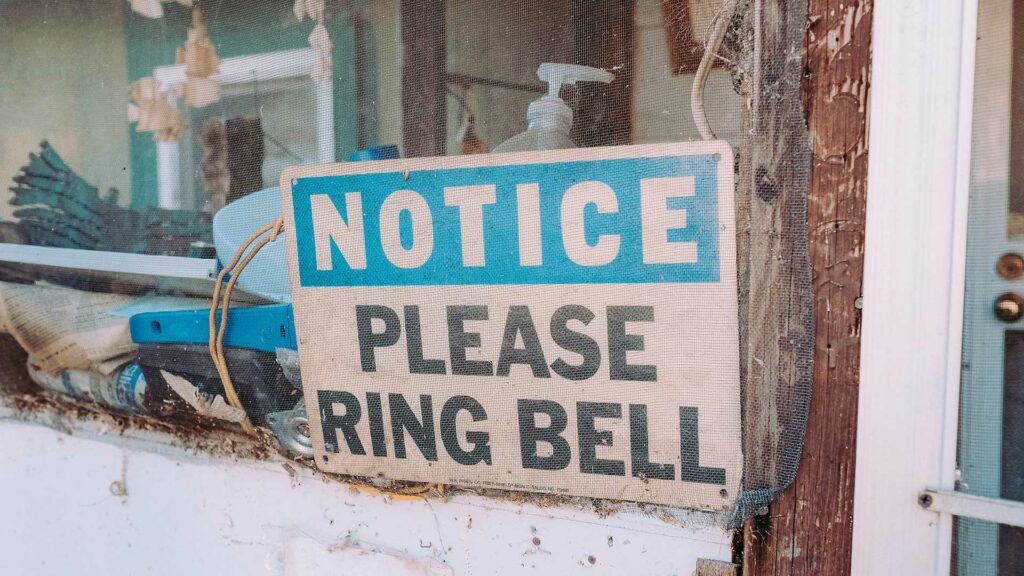Harold Rittenberry Jr., an 85-year-old sculptor in Athens, Georgia, uses welding torches and saws to find the hope inside of scrap metal.
Metal towers, animals, flowers, suns, birds and human figures are scattered around the front and side yards of a house on Rose Street in Athens, Georgia. In the middle of all that artwork is a small house on cement blocks, and inside the house is more art—small sculptures, masks, and large paintings, all created by Harold Rittenberry Jr. His shop is in back.
On a warm fall afternoon, he sits in his front yard in a metal chair, enjoying the fresh air and sunshine. He’s not an imposing figure as you might imagine someone would be who wrangles big sheets of metal. He’s an average-sized guy on the slim side. You have to raise your voice volume up a notch to converse with Rittenberry, who at 85 has had some hearing loss. Yes, he says, he has hearing aids, two of them, in fact, both in a drawer in his house.
“When I have ’em on, I hear too much,” he says. Without them, he doesn’t have to put up with sounds of traffic rumbling on Broad Street, a nail gun popping from a few streets over or an ambulance screaming to the emergency room of nearby St. Mary’s Hospital. In the relative silence, he can sit and think and watch birds soaring above him and hear them calling.
Near him are parts of a current project, a small wagon full of metal birds and metal stakes—he plans to bend the birds around the stakes so they look as if they are in flight. Standing close to the street is one of his most well-known creations, a Byzantine knight, a tall, imposing figure of random metal parts Rittenberry found and joined together. The parts include a food grinder, a piece of his father’s wagon, lawnmower blades, ice cream churns, chains for a beard, gears for joints, longer pieces for bones. He has had people stop and buy sculptures right out of his yard, but the knight “is the only one I hold dear. He’s not for sale. Never.”
He doesn’t make sculptures from found objects any longer, he says, because it’s so hard to find scrap pieces of metal, “it seems everybody just recycles it as soon as they’re done.”
How did he even start making metal sculptures? It wasn’t as if he comes from a family of artists, but he was building things from a young age. His father “did rock and brick repair work,” he says. “I guess you’d say he was a mason. He built walls all over town,” and Rittenberry helped him. Except for a young cousin, Rittenberry says he’s the only person in his extended family with artistic talent. He started with metal sculpture in the mid-1980s.
Then, he was caring for his elderly mother as she moved through the stages of Alzheimer’s — his father had died 20 years earlier. Rittenberry was working as a mechanic, repairing small engines, but he needed something else to do, a hobby or activity, to occupy his mind. Wood carving was an okay outlet, but when he saw that Sears Roebuck was selling an acetylene oxygen torch for $79.95, he bought one.
Only thing was, he didn’t know how to use it.
So he found books and instructional manuals, many at Habitat for Humanity’s thrift store, and taught himself.
"I learn something about the torch every time I pick it up. It’s a hard job to be a self-teacher, but I had to do it, so I did."
“And you know, I learn something about the torch every time I pick it up. It’s a hard job to be a self-teacher, but I had to do it, so I did,” he says. He’s accustomed to being self-reliant. He has never married, preferring, he says, to be a solo act. One of his two remaining sisters lives next door to him, and sometimes they do things together, but she, too, prefers mostly to keep her own company.
Today, Rittenberry’s metal towers, benches, gates and other artworks grace museums, public libraries, subdivisions entrances, homes, office complexes, community centers, community parks and cemeteries. They can be found in every state in the country except Hawaii and Alaska. In Georgia, the Georgia Museum of Art, the Athens Clarke County Library, the Lyndon House Art Center, Centennial Olympic Park, the Atlanta Municipal Court and the East Point Library, among other sites, feature a Rittenberry.
“I’d like to find an apprentice who could help me,” he says. “But they don’t want to do what I want them to do.” He would like someone who would just listen to him and follow orders, someone with the right temperament, although he has come to believe that’s probably impossible because he might have to holler at them if they do something wrong.
He himself learned to follow orders in the U.S. Army. He enlisted in the early 1950s when he was 16, intent on fulfilling a lifelong dream to drive “one of those big military vehicles.” He and spent two and a half years in Germany, including a winter in the Alps when the temperature dropped to 42 degrees below 0. It was quite an experience for a young man who had spent his entire life in Clarke County.
His body holds a memory of those years. He was home in Athens, out in the woods hunting squirrels, when he shot his left hand with a BB gun. Military doctors didn’t want to remove the embedded BB for fear of damaging nerves and tendons, so they left it in. Today, it looks like he’s holding a scallop in his palm. The callus didn’t interfere with his shooting a rifle and it doesn’t prevent him from holding tools, “so there it is.”
Last March, he was participating in a celebration for Black History Month at the Georgia Museum of Art when “I just hit the floor. Twice.” His atrial fibrillation had kicked. Last fall, he had a heart attack. In early April of this year, doctors inserted a pacemaker into his chest. So far, so good, he says. He’s back on the torch and moving forward. He’s also become more disciplined about what and when he eats, he says, shunning fats, oils and sugar to protect his heart.
Rittenberry’s sculptures are filled with delicately designed geese, elephants, birds’ nests, pixies, buffalo and giraffes, snakes, birds and rabbits. Birds fly through most of Rittenberry’s metal sculptures, their wings outstretched , whirling, as though they can lift each work right off the ground. He gets ideas for his art from everywhere — books, the Bible, television shows, African stories, mythology and nature. If someone commissions a work with particular elements, he’ll figure out a way to work those into a design.
“African animals, I like those,” he says. Human figures may dance together or sit under a tree, reading or fishing, while birds fly above them. They could be fishing for fish or fishing for knowledge. The birds are often messengers, he says—in one sculpture, they’re fleeing from snakes, which symbolize global tensions. He uses mythological figures as well, fauns, pixies, unicorns and mermaids. You can find flowers, moons, suns and stars. And words such as “Hope” and “Love Is All.”
“I try to tell a story in my designs,” Rittenberry says. “I love to tell and hear stories. What a thing to tell a story in metal.”

